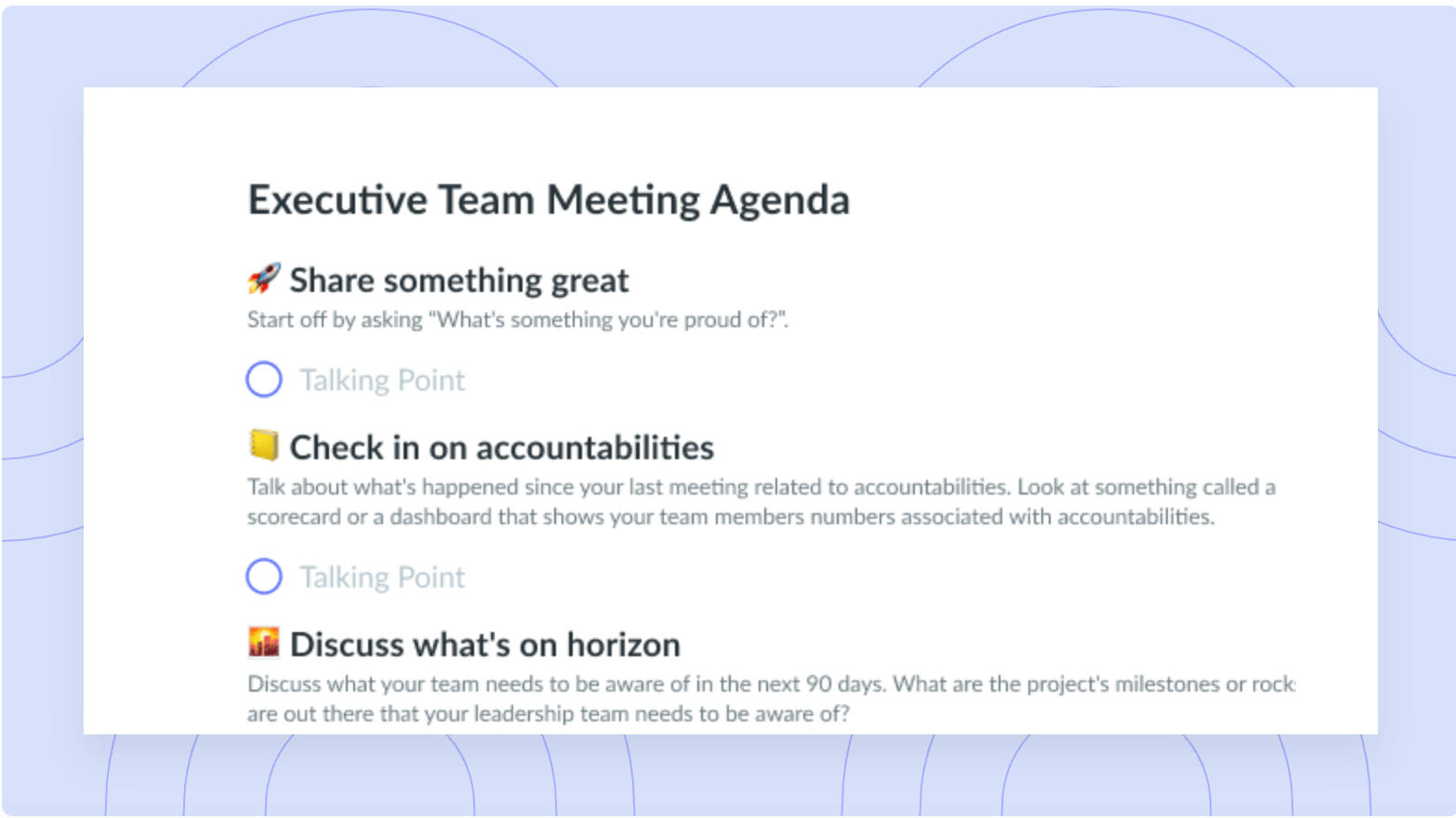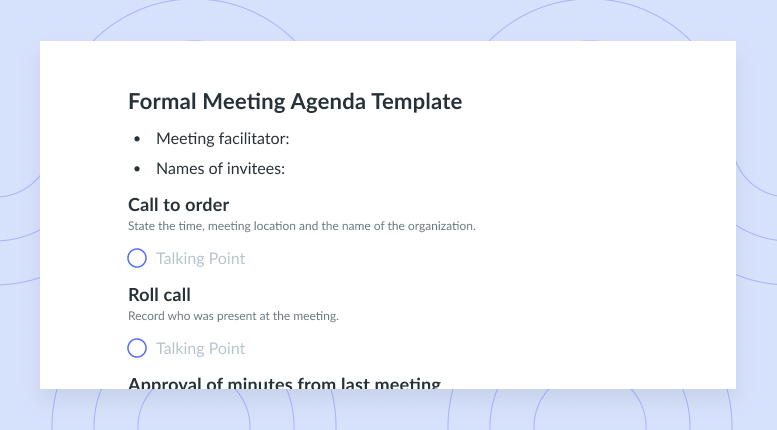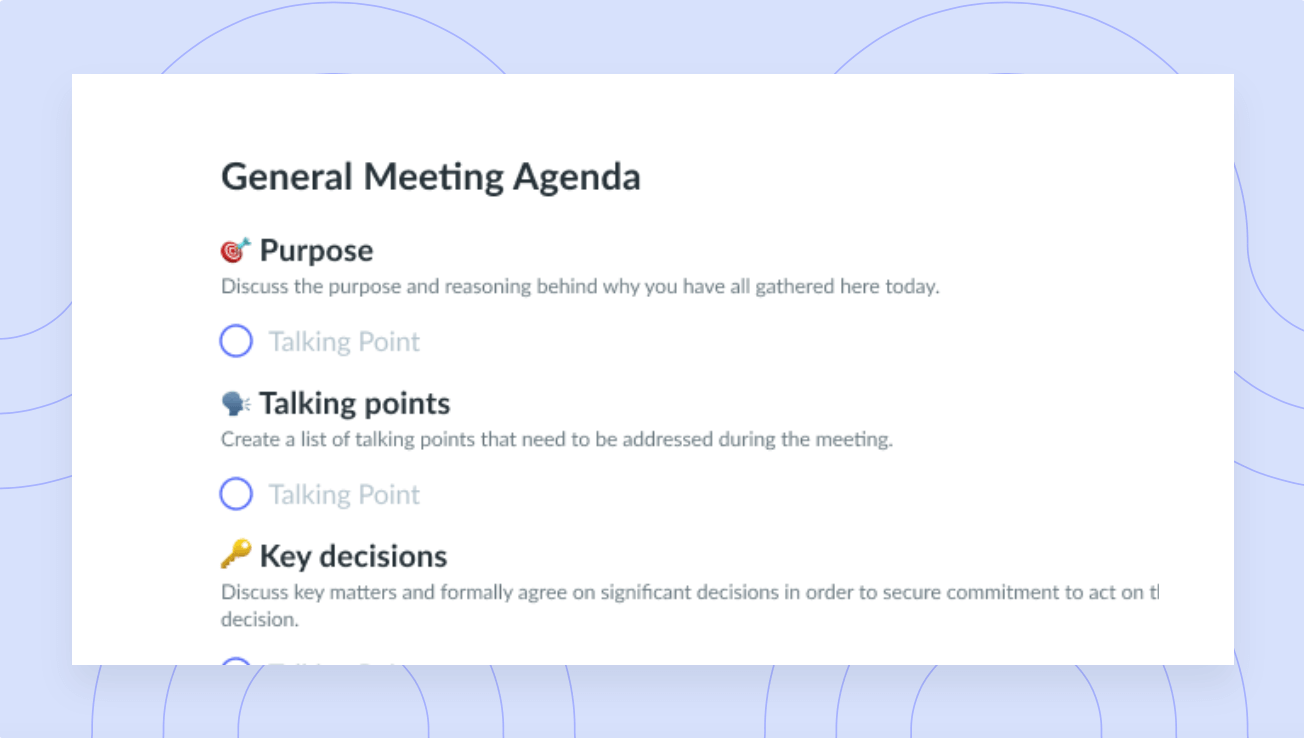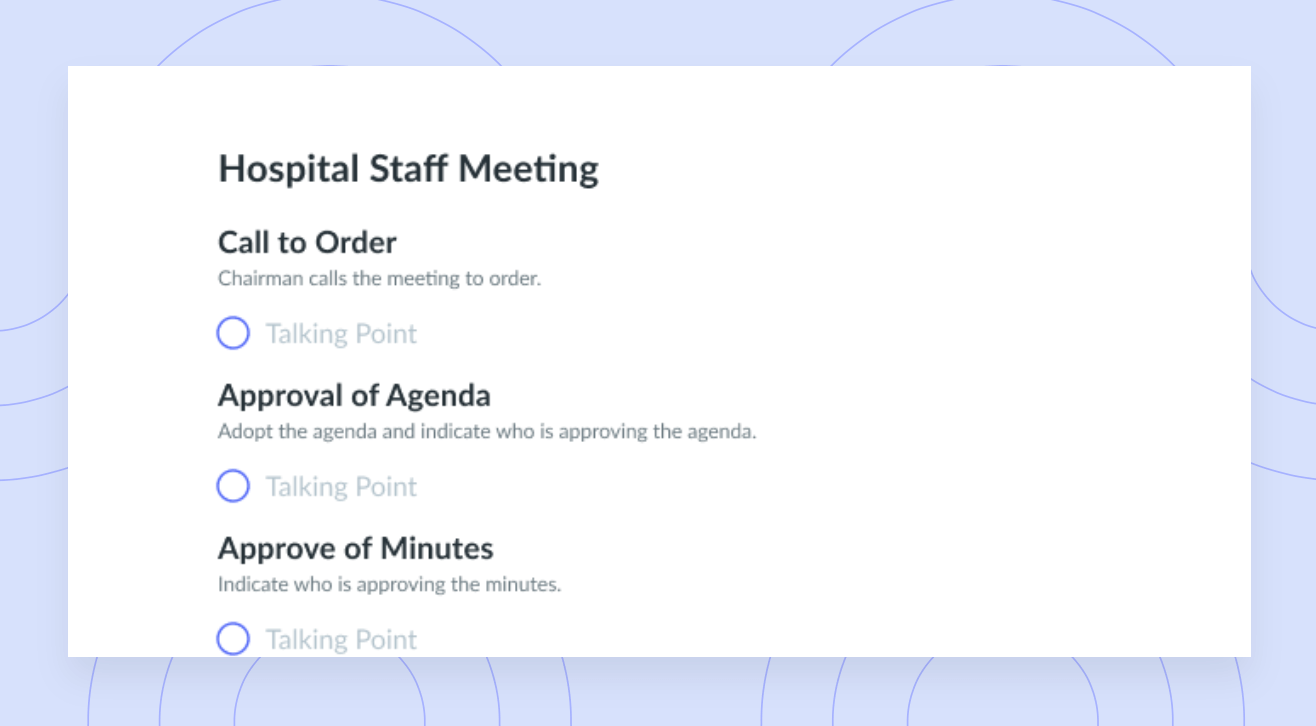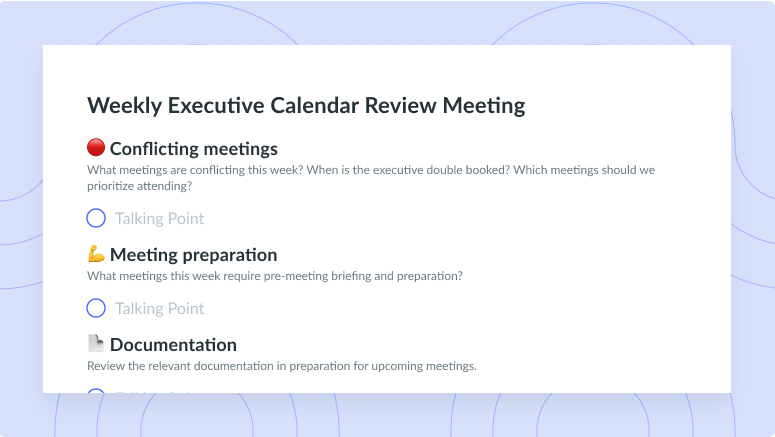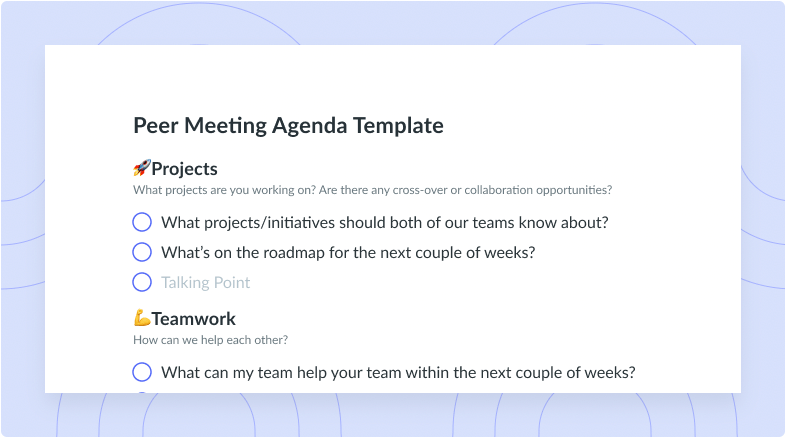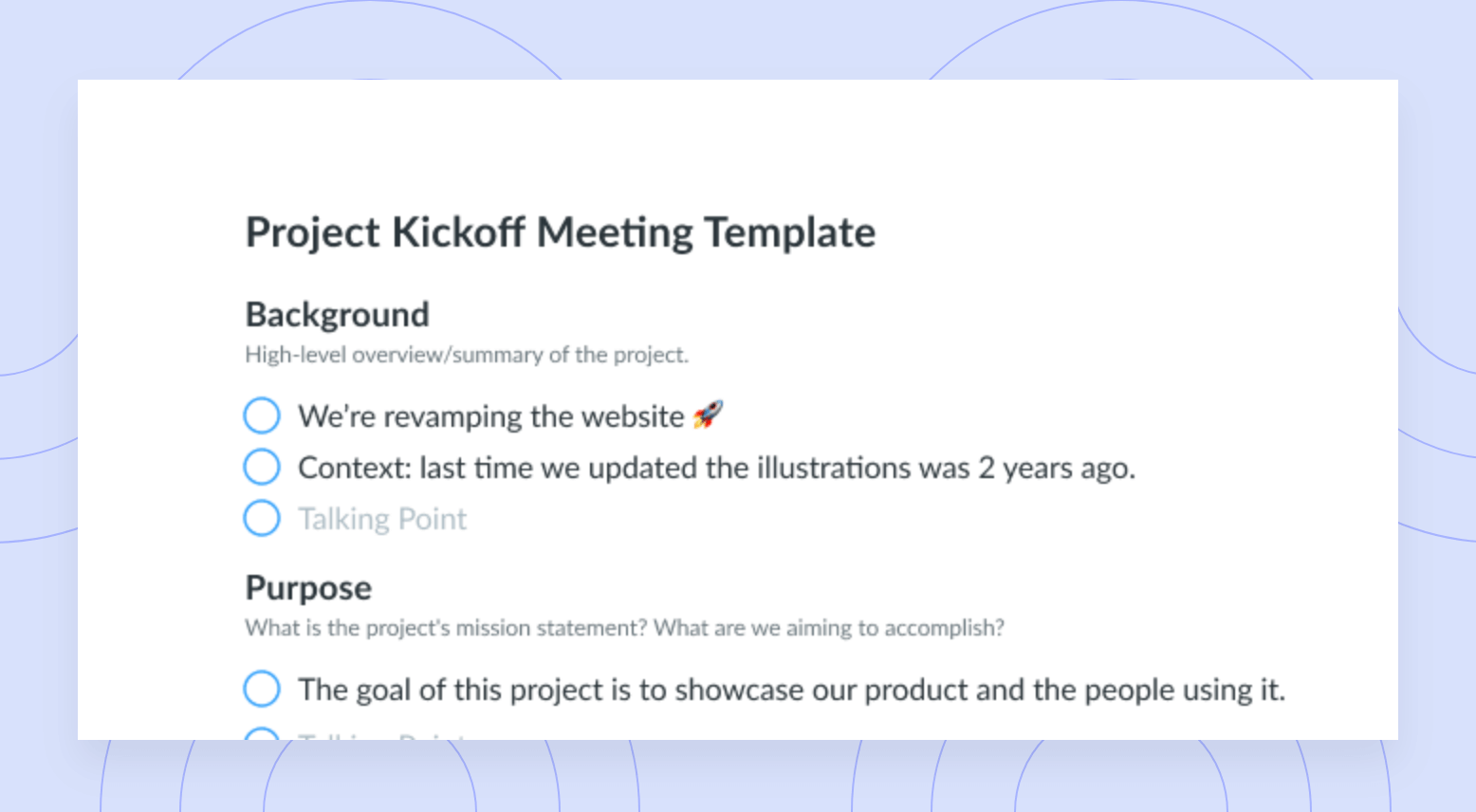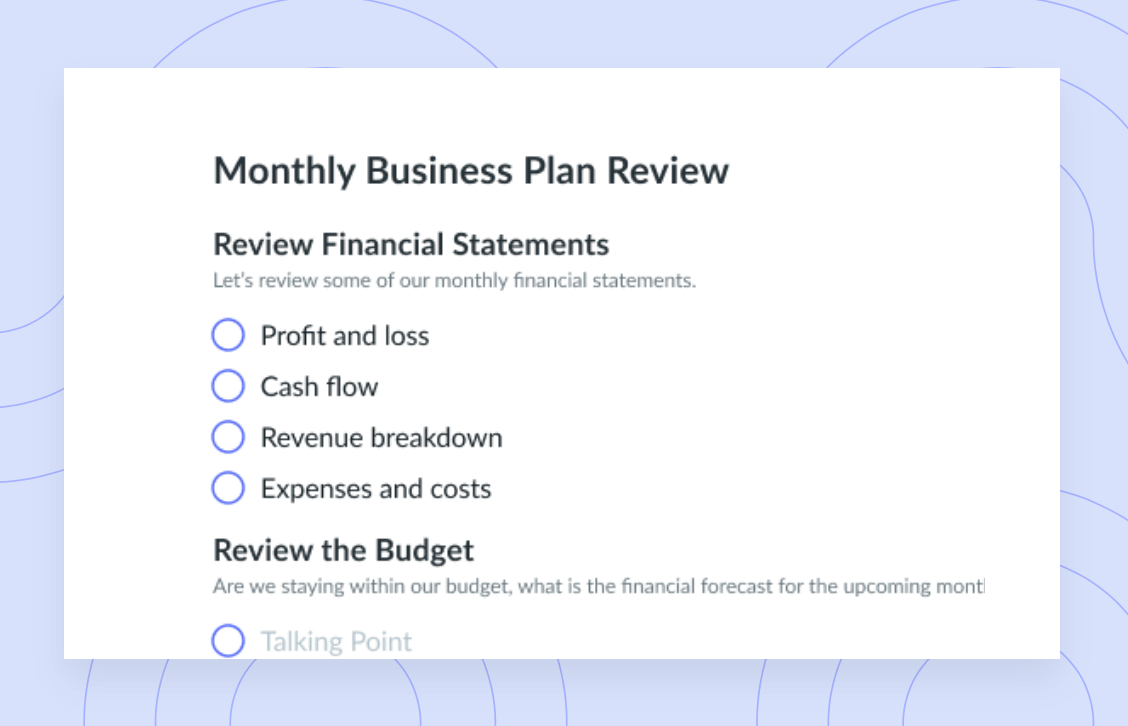Hosting Effective Engineering One-On-Ones [+ Free Template]
Learn tips and best practices to host productive one-on-ones with your engineer teammates today. Plus, get an engineering one-on-one template!
Your team of engineers are likely a talented group of problem solvers, innovators, and creators. While they write code, solve problems in web applications, and collaborate with their peers, it’s your role as their manager to ensure that the team is delivering results for the company. If you’re an engineer yourself, it’s important to remember that managing requires an entirely different skill set than what you’re currently using to execute your own day-to-day projects.
Let’s take a look at how you can use one-on-one meetings to share and receive feedback, and build lasting relationships with your team of engineers.
- Why are one-on-one meetings with engineers important?
- How to host effective engineering one-on-ones
- Free engineering one-on-one meeting agenda template
Why are one-on-one meetings with engineers important?
1Provide mutual feedback
This is a time for you as a manager to give and receive feedback. Provide feedback to your engineers that is based on expectations you’ve previously set together. The feedback should be fair and unbiased, and should clearly state if the individual has been performing at a level that is on-par, below, or above the desired level. Given the nature of the field, you should encourage your engineers to develop new technical skills that can help your team diversify its skill set. It’s vital that you hear regular feedback as a manager, too. Ask your employees how you can best support their work, what you’re doing well, and how you can improve as a manager. Feedback sessions within one-on-ones should motivate and build trust with your employees.
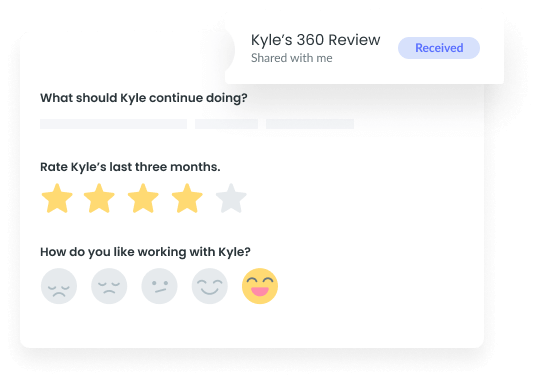
2Help you overcome blockers
Blockers can be extremely frustrating for coders and managers alike, and they’re bound to arise at some point in the software development life cycle. During one-on-one meetings, you can work with individual members of your team to push through blockers that are stopping or slowing down the delivery of a product. For example, you can use a Kanban technique that focuses on removing the blockers rather than abandoning the blocked item to begin other work. Once you’ve determined the reason for the blocker, focus on unblocking the work as opposed to starting new work. Escalate if necessary to another member of the team. If you unblock the item during your one-on-one, keep a record of it for future reference.

Engineering one-on-ones worth showing up to
A well-run one-on-one meeting can foster communication and collaboration by including an agenda that both attendees can contribute to. Try using a tool like Fellow!
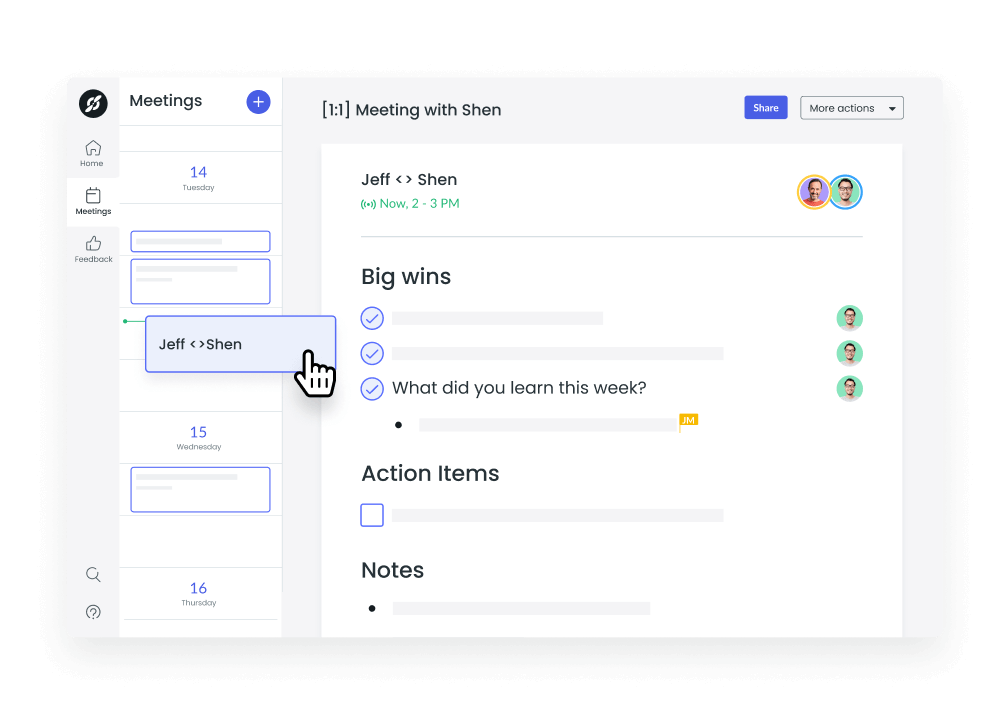
3Enhance professional development
One-on-ones provide an opportunity for your engineers to discuss their professional development goals. If the engineers on your team bring cutting-edge skills to the table, your company will be able to work through development processes more quickly and meet the needs of your clients! Encourage individuals to learn new features for each product they use, and to regularly take courses or read books that will sharpen their skills. In addition to technical skills, work on soft-skill development with your staff during this time. For example, an engineer who is able to manage their time will be more confident, work smarter, and may even become a good candidate for future promotions within the team.
4Build rapport
Building a relationship with each teammate individually is the key to being a great manager. One-on-one meetings will ensure that each member of your engineering team feels heard and has the tools they need to complete their work. During your first meeting with a subordinate, introduce yourself, share information about your background, and strive to get to know them a little better. Regular check-ins will ensure that you’re bonding with every member of the team, even if you’re not working closely with them on a program at the time. In addition to building trust, one-on-one meetings will allow you to regularly acknowledge small victories and maintain visibility within the team.
How to host effective engineering one-on-ones
1Come prepared
- Create a meeting agenda: Before each one-on-one, create an agenda that sets clear objectives to drive productivity during your meeting. You should distribute the agenda 24 hours in advance so the attendee can review the meeting topics, understand the purpose of the meeting, and be empowered to contribute to the discussion. When the employee knows your talking points ahead of time, they’ll be able to come prepared with questions, feedback, and ideas of their own. Encourage your employees to contribute to the meeting agenda in advance of the one-on-one as well.
- Follow your agenda: Stick to the agenda topics throughout your one-on-one. By doing so, you’ll be able to stay on track and avoid distractions during the meeting. Ensure you have some time scheduled before or after the one-on-one to give personal updates or engage in non-work-related conversation. Remember, this is a time to build rapport with your employees as much as it’s a time to discuss important business matters. Take meeting notes throughout that you can use as a refresher after the meeting.
2Discuss meaningful topics
- Give and receive feedback: Don’t wait until your quarterly performance reviews to tell your employees what they’re doing well and how they can improve. Mark Twain once said that “continuous improvement is better than delayed perfection.” As engineers, your team is likely working around the clock to create highly technical solutions that make your applications and systems run smoothly. By normalizing and tracking feedback, you’re helping the members of your team work through challenges more quickly and with ease.
- Talk about professional goals: Take this opportunity to learn about each employee’s professional goals. When a subordinate comes to you with an objective, help them create a detailed plan that can help them achieve it. For example, if you learn that your junior software developer is keen to learn new skills that will help them ascend to the next level of their career, you can come prepared with resources to help them make this goal a reality.
- Problem-solve through blockers: If your employees have come across issues during the development or testing stages that aren’t allowing them to move forward with their work, use your meeting time as an opportunity to work through these challenges together. First, help your employee identify what’s blocking their progress. Once you’ve unblocked the coding task, keep a record of the blocker for future reference. Set up another meeting to further work through the issue if necessary.
3Follow effective meeting practices
- Listen actively: Active listening is so much more than just paying attention to the other party. During each meeting with an employee, you should maintain an open mind, reflect on what you’re being told, clarify by asking questions, and share your own ideas, feelings, and suggestions. You should be open to hearing your employee’s ideas, perspectives, and possibilities during each conversation. Throughout the one-on-one, restate key themes to solidify your understanding of the other person’s perspective. Act like you’re a coach. You can query, guide, and offer advice without dictating solutions.
- Take meeting notes: Your meeting notes should be an informal record of important topics that were covered throughout the one-on-one. These could include: goals, obstacles, important deadlines, ideas, or topics that you’d like to discuss more on another occasion. The meeting notes should also document next steps so your employee is never at a loss! Meeting notes should be simple enough that you can refer back to them at any time for a refresher on the purpose and outcomes of any meeting. The best part of meeting notes is that you can be creative and choose whatever format works best for you and your team of engineers!
- Assign action items: Each member of your team should leave their one-on-one meeting with an outlined list of next steps. Use Fellow to assign, track, and follow up on action items delegated throughout your meeting. Have the employee report back and give a status update during their next one-on-one. Each member of the team should be prepared to deliver on their responsibilities and complete assigned tasks.
- Set recurring one-on-ones: If you’re working in a field like software engineering that requires frequent problem-solving and has tight deadlines, you’ll want to set recurring check-ins with your subordinates. Aim to schedule a meeting with each member of your team on a weekly or biweekly basis so you can chat about tasks, give regular feedback, troubleshoot issues, and work through challenges together.
Free engineering one-on-one meeting agenda template
Topics to cover:
- Team’s output
- Challenges
- Opportunities
- Room for improvement
- Specific files
- Action items
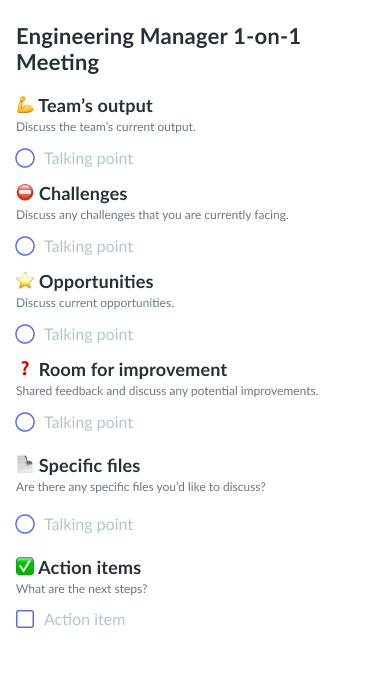
Parting advice
If you manage a team of engineers, you already know how challenging it is to keep up with their work. Don’t overlook the benefits of one-on-one meetings! You and the members of your team will benefit greatly from regular check-ins if you aren’t conducting these meetings already. Use one-on-ones as your chance to provide and receive feedback, help your staff overcome blockers, build rapport with the greater team, and reach professional and company objectives today.











